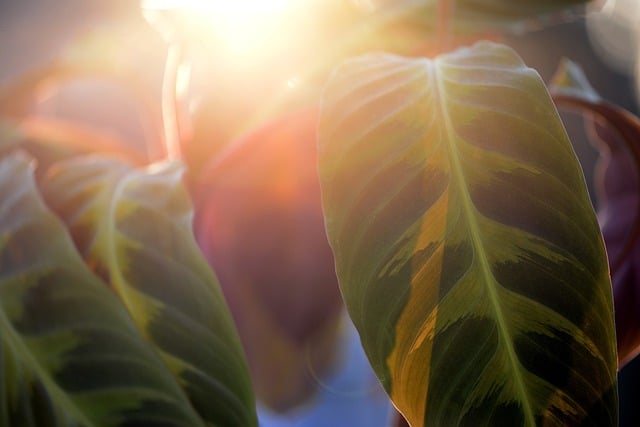Calathea plants are known for their beautiful, unique foliage and are a popular choice for indoor plant enthusiasts. However, it can be disheartening to see your calathea plant dying. If you’re experiencing this issue, don’t worry – there are solutions to revive your dying calathea plant.
Identifying the signs of a dying calathea plant is crucial to understanding the problem and finding the appropriate solution. Common signs include leaves turning brown, crispy, or curling, wilting or drooping, and a general sickly appearance.
These signs can be caused by a variety of problems, including overwatering, underwatering, low humidity, too much direct sunlight, or pests and diseases.
In this article, we will explore common problems and solutions for a dying calathea plant, as well as preventive measures for calathea care. We will also discuss how to revive a dying calathea plant and understand its native environment.
By the end of this article, you’ll have the knowledge and tools to nurse your calathea plant back to health and prevent future issues.
Key Takeaways
- Identifying signs of a dying calathea plant is crucial to finding the appropriate solution.
- Common problems include overwatering, underwatering, low humidity, too much direct sunlight, and pests and diseases.
- Reviving a dying calathea plant requires providing the right lighting and watering conditions, while preventive measures include proper watering, humidity, and pest control.
Similar posts:
Identifying Signs of a Dying Calathea
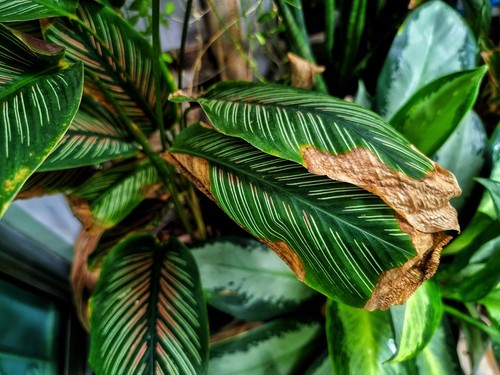
Calathea plants are known for their beautiful foliage, but they can be quite finicky and sensitive to changes in their environment. If you notice your Calathea plant is not looking as healthy as it used to, it might be dying. Here are some signs to look out for:
1. Yellow Leaves
One of the most common signs of a dying Calathea plant is yellow leaves. This can happen for a variety of reasons, but one of the most common is overwatering.
If the soil is constantly wet, the roots can become waterlogged, which can cause the leaves to turn yellow and eventually die. Other causes of yellow leaves include underwatering, too much direct sunlight, or exposure to cold drafts.
2. Brown Leaf Tips
Another sign of a dying Calathea plant is brown leaf tips. If the plant is not getting enough water, the tips of the leaves can dry out and turn brown. This can also happen if the plant is exposed to too much direct sunlight or if the air is too dry. In some cases, brown leaf tips can be a sign of root rot, which can be caused by overwatering.
3. Wilting or Drooping
If your Calathea plant is wilting or drooping, it might be dying. This can happen if the plant is not getting enough water, but it can also be a sign of root rot or other diseases. Wilting or drooping can also be caused by exposure to cold drafts or too much direct sunlight.
4. Crispy Foliage
If the leaves of your Calathea plant are crispy or crunchy to the touch, it might be dying. This can happen if the plant is not getting enough water, but it can also be a sign of exposure to too much direct sunlight or low humidity. In some cases, crispy foliage can be a sign of pest infestations or diseases.
Calathea Plant Dying
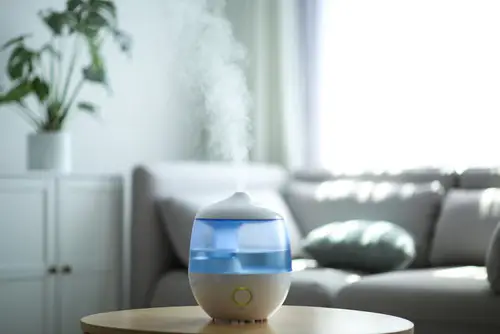
Calathea plants are known for their vibrant foliage, but they can be finicky and prone to various problems. Here are some common issues that can cause a Calathea plant to die and solutions to address them.
1. Overwatering and Underwatering
Overwatering and underwatering are two of the most common problems that can lead to a Calathea plant’s death. Overwatering can cause root rot, while underwatering can lead to drooping and wilting leaves.
To avoid overwatering, make sure the soil is dry to the touch before watering. When watering, make sure to water thoroughly but allow the soil to drain excess water. If the soil is waterlogged, the roots will not get enough oxygen, and the plant will suffer. On the other hand, if the soil is too dry, the plant will wilt, and the leaves will turn brown.
2. Exposure to Direct Sunlight
Calathea plants prefer bright, indirect light, and direct sunlight can scorch their leaves. If the plant is exposed to direct sunlight, the leaves will turn brown and crispy. To avoid this problem, place the plant in a spot where it can receive bright, indirect light, such as near a north-facing window.
If the plant is near a south-facing window, consider using a sheer curtain to filter the light.
3. Temperature and Humidity Issues
Calathea plants thrive in warm, humid environments, and they do not tolerate cold drafts. If the temperature drops below 60°F, the plant will suffer, and the leaves will turn brown.
Additionally, if the humidity is too low, the plant’s leaves will dry out and turn brown at the edges. To avoid these problems, keep the plant in a warm, humid location, away from drafts. Consider using a humidifier or placing a tray of water near the plant to increase humidity.
4. Pest Infestations
Calathea plants are vulnerable to various pests, including spider mites, mealybugs, and aphids. These pests can cause damage to the leaves and weaken the plant. To avoid pest infestations, inspect the plant regularly and remove any pests you find.
Consider using insecticidal soap or neem oil to treat infestations. Additionally, make sure to keep the plant clean and dust-free, as pests are attracted to dusty conditions.
Reviving a Dying Calathea
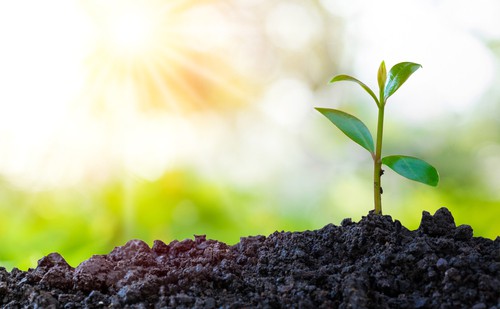
Calatheas are known for their beautiful foliage and vibrant colors. However, they can be quite finicky and require proper care to thrive. If you notice your Calathea plant is dying, there are steps you can take to revive it. In this section, we will discuss some of the techniques you can use to revive your dying Calathea.
1. Correct Watering Techniques
One of the most common causes of a dying Calathea is improper watering. Overwatering can lead to root rot, while underwatering can cause the leaves to wilt and dry out.
To properly water your Calathea, make sure the soil is moist but not waterlogged. Water your plant when the top inch of soil feels dry to the touch. Use distilled water or tap water that has been left out for 24 hours to allow the chlorine to evaporate.
2. Proper Lighting and Temperature Control
Calatheas prefer bright, indirect light. Direct sunlight can scorch their leaves, while too little light can cause them to fade. Keep your Calathea in a well-lit room, but away from direct sunlight.
They also prefer temperatures between 65 and 80 degrees Fahrenheit. If the temperature drops below 60 degrees Fahrenheit, your Calathea may suffer.
4. Dealing with Pests
Pests can also cause your Calathea to die. Common pests include spider mites, mealybugs, and scale insects. To get rid of pests, use neem oil, rubbing alcohol, or insecticidal soap.
Apply the solution to the leaves and stems of your plant, making sure to cover all surfaces. Repeat the treatment every few days until the pests are gone.
5. Pruning and Repotting
Pruning and repotting can also help revive a dying Calathea. Use pruning shears to remove any dead or yellowing leaves. This will allow your plant to focus its energy on healthy growth.
If your Calathea is root-bound, it may benefit from repotting. Choose a pot with drainage holes and fill it with a well-draining potting soil, such as a mix of peat moss and perlite.
By following these techniques, you can revive your dying Calathea and help it thrive once again. Remember to be patient and consistent with your care, and your Calathea will reward you with its beautiful foliage.
Preventive Measures for Calathea Care
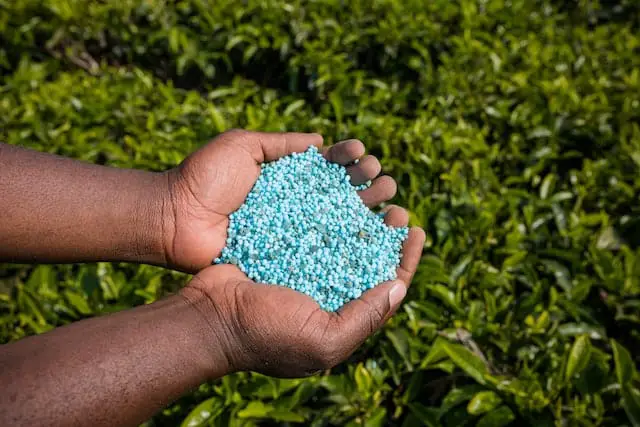
Calathea plants are known for their stunning foliage, but they can be quite finicky when it comes to care. To prevent your Calathea plant from dying, it is essential to provide the right growing conditions. In this section, we will discuss some preventive measures that can help keep your Calathea healthy and thriving.
1. Choosing the Right Soil
Choosing the right soil is crucial for the health of your Calathea plant. Calathea plants prefer a well-draining soil that is rich in organic matter. A high-quality potting mix that contains peat moss, perlite, and vermiculite is ideal for Calathea plants.
It is important to avoid using heavy soils that retain moisture, as this can lead to root rot and other fungal diseases. Additionally, make sure to choose a pot with drainage holes to prevent water from accumulating in the soil.
2. Maintaining Humidity Levels
Calathea plants are native to tropical regions and require high levels of humidity to thrive. To maintain proper humidity levels, it is recommended to keep the soil moist and use a humidifier or pebble tray. Misting the leaves can also help increase humidity levels.
It is important to avoid exposing your Calathea plant to dry air, such as from air conditioning or heating units. This can cause the leaves to dry out and turn brown.
3. Proper Feeding and Fertilizing
Proper feeding and fertilizing are essential for the growth and health of your Calathea plant. Calathea plants require regular fertilization with a balanced fertilizer that contains equal amounts of nitrogen, phosphorus, and potassium.
It is recommended to fertilize your Calathea plant every two weeks during the growing season (spring and summer) and once a month during the dormant season (fall and winter). Additionally, make sure to water your Calathea plant with tap water that has been allowed to sit for 24 hours to allow the chlorine to dissipate.
Understanding Calathea’s Native Environment
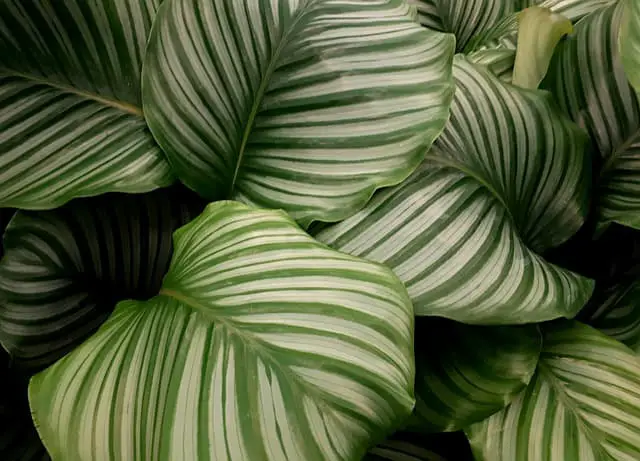
Calathea is a genus of plants that is native to the South American rainforest. In their natural habitat, these plants thrive in warm, humid conditions with temperatures ranging from 65°F to 85°F (18°C to 29°C). They grow under the shade of taller trees and receive filtered light.
In their native environment, Calathea plants grow in well-draining soil that is rich in organic matter. The soil is constantly moist due to frequent rainfall, but not waterlogged. The rainforest’s high humidity levels also help keep the soil moist.
The rainforest’s climate is characterized by high levels of precipitation and humidity, with little variation in temperature throughout the year. This environment provides the ideal conditions for Calathea plants to grow and thrive.
Calathea plants are adapted to their native environment, and they can be difficult to care for in other settings. They are sensitive to changes in temperature, light, and humidity levels, which can cause them to wilt or die.
To care for a Calathea plant, it is important to replicate its native environment as closely as possible. This means providing it with warm temperatures, high humidity levels, and filtered light. It is also important to use well-draining soil that is rich in organic matter and to keep the soil moist but not waterlogged.
Conclusion
To save a dying Calathea plant, one should start by identifying the root cause of the problem. If the plant is overwatered, it is essential to reduce the frequency of watering and ensure proper drainage.
On the other hand, if the plant is underwatered, it is crucial to increase the frequency of watering and ensure that the soil is moist but not waterlogged.
Another critical factor in saving a dying Calathea plant is to ensure that it receives the right amount of light. These plants thrive in bright, indirect light and can suffer if exposed to direct sunlight. Therefore, it is essential to provide them with the right amount of light to promote new growth.
In addition to these factors, it is also essential to check for pests and diseases regularly. Pests such as spider mites and mealybugs can cause significant damage to Calathea plants if left untreated. Therefore, it is crucial to identify and treat any pest infestations promptly.
Finally, providing the plant with the right nutrients is also essential for its recovery. Fertilizing the plant with a balanced fertilizer can help it recover and promote healthy growth.
Frequently Asked Questions
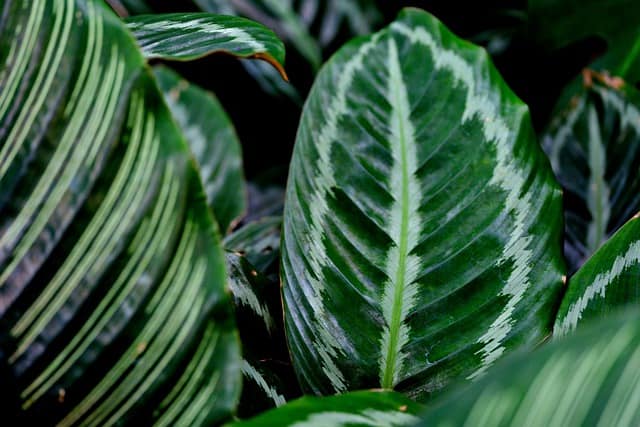
How to save Calathea from root rot?
Root rot is a common problem that affects Calathea plants. Overwatering is the main cause of root rot. To save a Calathea plant from root rot, it is important to remove the affected parts of the plant and repot it in fresh soil.
Make sure the new soil is well-draining and avoid overwatering the plant. It is also recommended to use a fungicide to prevent further damage.
Why are my Calathea leaves curling?
Curling leaves in Calathea plants can be caused by several factors. The most common reason is underwatering. Calathea plants require consistent moisture to thrive.
Other reasons include low humidity, exposure to direct sunlight, and pest infestation. To fix the issue, make sure to water the plant when the soil is dry to the touch, increase humidity levels, and protect the plant from direct sunlight.
What do I do when Calathea loses all leaves?
If a Calathea plant has lost aall its leaves, it may be due to stress, disease, or pest infestation. To revive the plant, it is important to identify the root cause of the problem.
Check for signs of disease or pest infestation and treat accordingly. If the plant is stressed, provide it with the necessary care, including proper watering, humidity, and light conditions.
How to help Calathea transplant shock?
Transplant shock is common in Caalathea plants when they are moved to a new pot or location. To help the plant recover from transplant shock, make sure to provide it with the necessary care, including proper watering, humidity, and light conditions.
Avoid fertilizing the plant for a few weeks after transplanting to prevent further stress.
How to protect Calathea cold damage?
Calathea plants are sensitive to cold temperatures. If exposed to cold temperatures, the leaves may turn brown and wilt. To protect the plant from cold damage, make sure to keep it in a warm location away from drafts and cold air. Cover the plant with a cloth or plastic bag if necessary.
What does an overwatered Calathea look like?
Overwatering can cause root rot and other problems in Calathea plants. Signs of overwatering include yellowing leaves, wilting, and a mushy stem.
To prevent overwatering, make sure to water the plant only when the soil is dry to the touch. Use a well-draining soil mix and avoid leaving the plant in standing water.

Hey, I’m Lisa and I’ve been an avid gardener for over 30 years. I love writing, talking and living in the garden! Feel free to connect with me on my socials below

